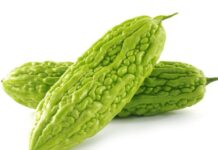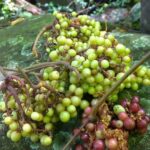However, not all grapes sold in markets or supermarkets meet quality standards. If you’re observant, you’ll notice three types of grapes to avoid at all costs, as they are not only less flavorful but may also pose potential health risks.
1. Unnaturally Large Grapes
Most common grape varieties have fruits of average size, not excessively large. Yet, you might occasionally come across clusters with unusually large, glossy, and vibrant fruits. Despite their appealing sweetness, grapes that are larger than their natural size likely received growth-stimulating chemicals during cultivation.
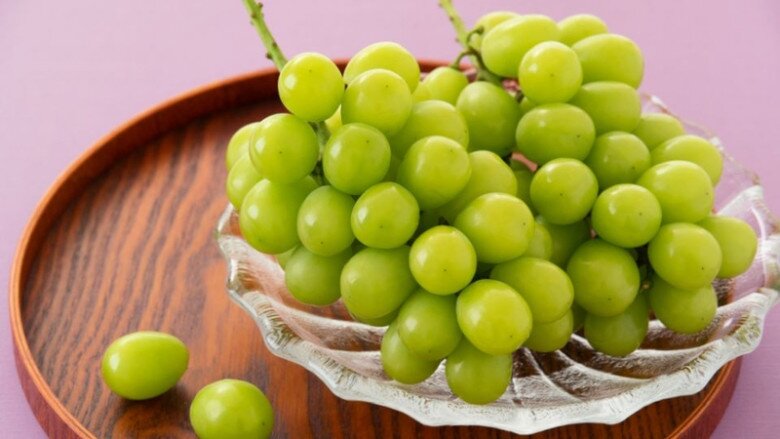
Consuming these grapes may lead to the ingestion of chemical residues, which can be harmful in the long term. Therefore, except for certain naturally large grape varieties, opt for clusters with evenly sized, medium-sized fruits that have firm, plump skins and no signs of wilting.
Grapes with uniform size, comfortable to hold, and fresh stems are indicators of naturally harvested, high-quality grapes.
2. Grapes Without the Natural “Bloom”
Many mistakenly believe the white, powdery “bloom” on grape skins is dirt that needs thorough washing. In reality, this natural “bloom” is a protective wax layer formed when grapes are exposed to sunlight, helping to retain moisture and shield the skin.
Grapes retaining this bloom are typically naturally ripened, preserving their nutrients and fresh sweetness. Conversely, glossy, smooth grapes may have been treated with ripening agents or polished before sale, compromising their quality.
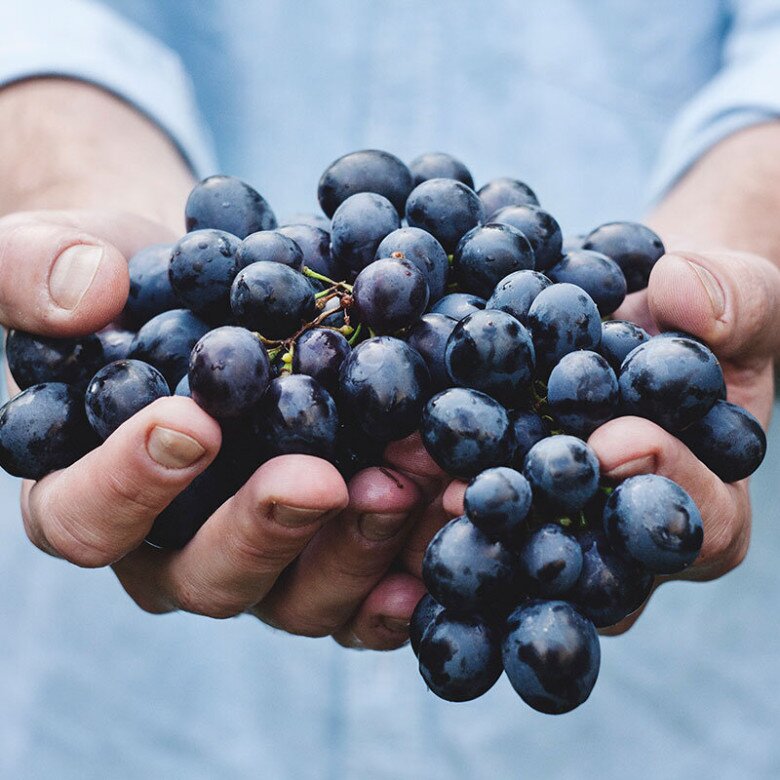
Additionally, grapes lacking this bloom may have been stored for extended periods or transported long distances, resulting in dryness, shriveled stems, and diminished freshness. When selecting grapes, examine the stems; if they appear brown and withered, the grapes are likely not fresh.
Note: The natural bloom on grapes signifies freshness, so avoid excessive washing before consumption.
3. Grapes with Cracked Skins
Small cracks on grape skins, though seemingly harmless, indicate damage during growth or storage. There are two primary causes:
– Rapid growth due to chemical stimulants, causing the skin to crack as it cannot expand sufficiently.
– Overripe grapes that crack easily during transportation.
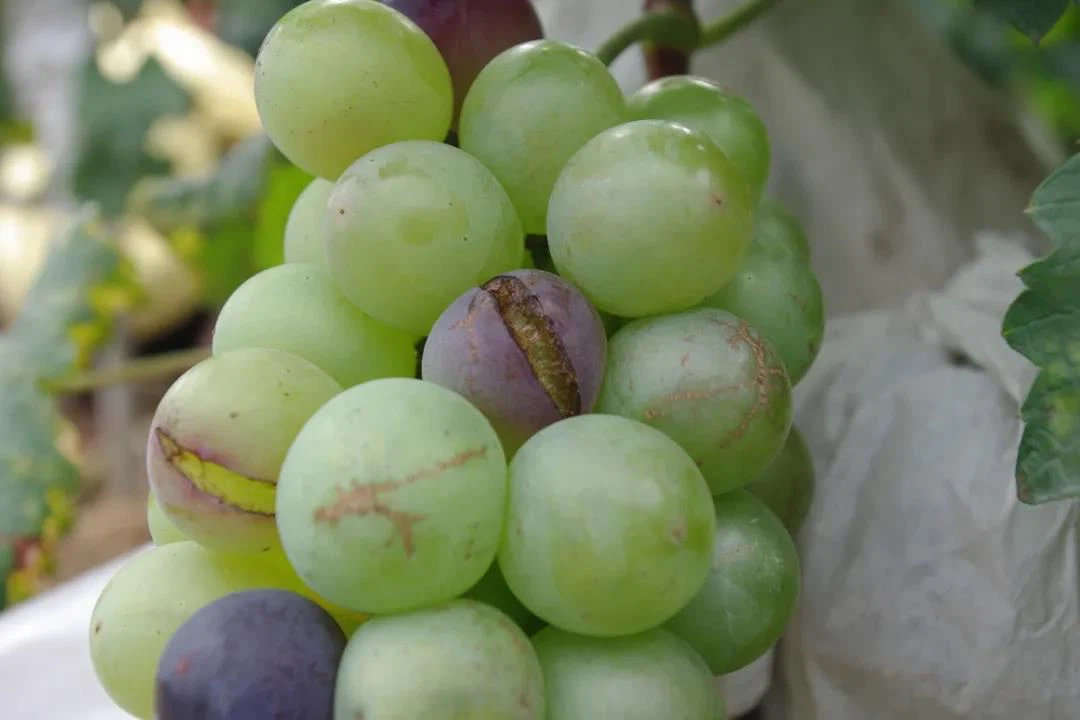
Regardless of the cause, these cracks provide entry points for bacteria, insect eggs, and dust, increasing the risk of spoilage and food safety issues. Therefore, it’s best to avoid grapes with cracked skins, even if they appear fresh.
Warning: Grapes with cracked skins may harbor harmful bacteria and should not be consumed.
When buying grapes, choose clusters with medium-sized fruits, naturally glossy skins, intact blooms, and fresh green stems. Avoid unusually large grapes, those without the natural bloom, or cracked skins, as these may indicate chemical treatment or prolonged storage.
A keen eye during selection ensures you enjoy the pure sweetness of grapes—a wholesome gift from nature.
Reference: Safe Grape Washing Method
Step 1: Prepare the Cleaning Solution
Start by preparing a basin of clean water, adding baking soda and starch (cornstarch or potato starch).
Baking soda’s mild alkalinity neutralizes and removes dirt and pesticide residues from the grape skins.
Starch effectively absorbs impurities, ensuring even microscopic particles are removed.
Stir the solution until fully dissolved before soaking the grapes.
Step 2: Soak and Clean the Grapes
Trim the stems to eliminate bacteria-prone areas, then place the grapes in the prepared solution. Gently agitate to dislodge dirt, insect remnants, and surface contaminants.
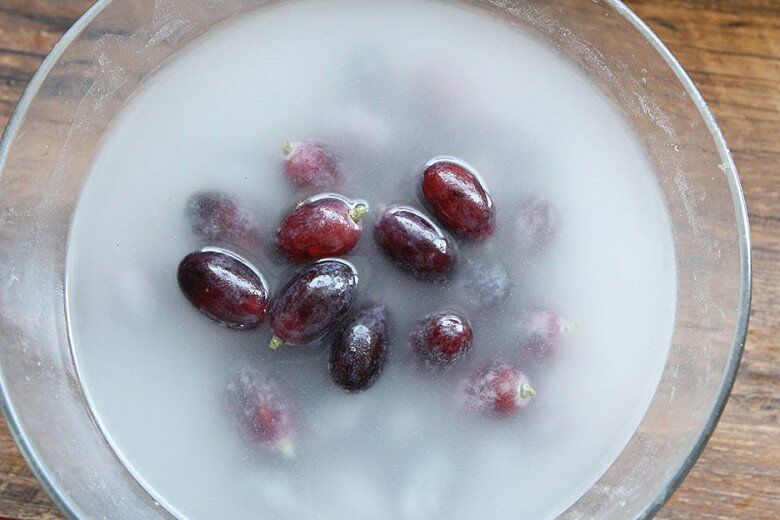
For a more thorough clean, increase agitation slightly, but handle gently to avoid bruising the fruits.
Soak for approximately 5 minutes to allow the solution to effectively clean the grapes.
Step 3: Rinse with Clean Water
After soaking, discard the used solution and rinse the grapes under a gentle stream of clean water. Shake lightly during rinsing to remove any remaining baking soda and starch. Rinse 2-3 times until the water runs clear and free of residue.
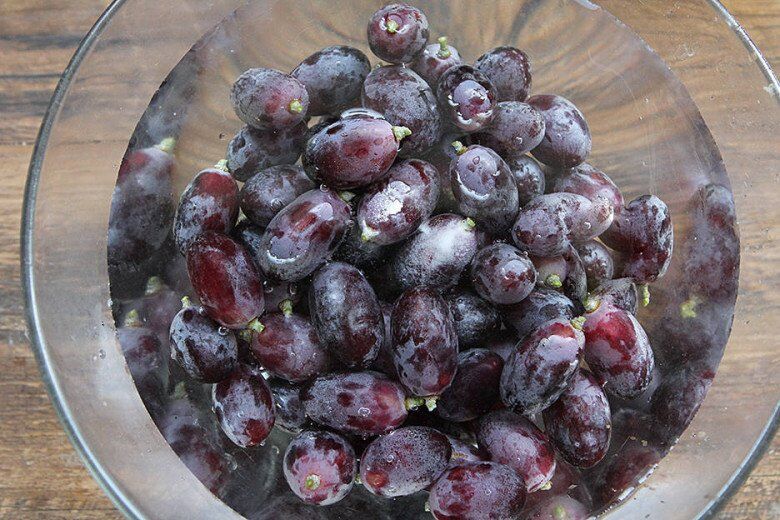
Step 4: Dry and Store
Pat the grapes dry with paper towels or a soft cloth, then store in an airtight container or consume immediately. This washing method ensures cleanliness while preserving the grapes’ sweetness and nutrients, making them safe for enjoyment or use in desserts, juices, and smoothies.














